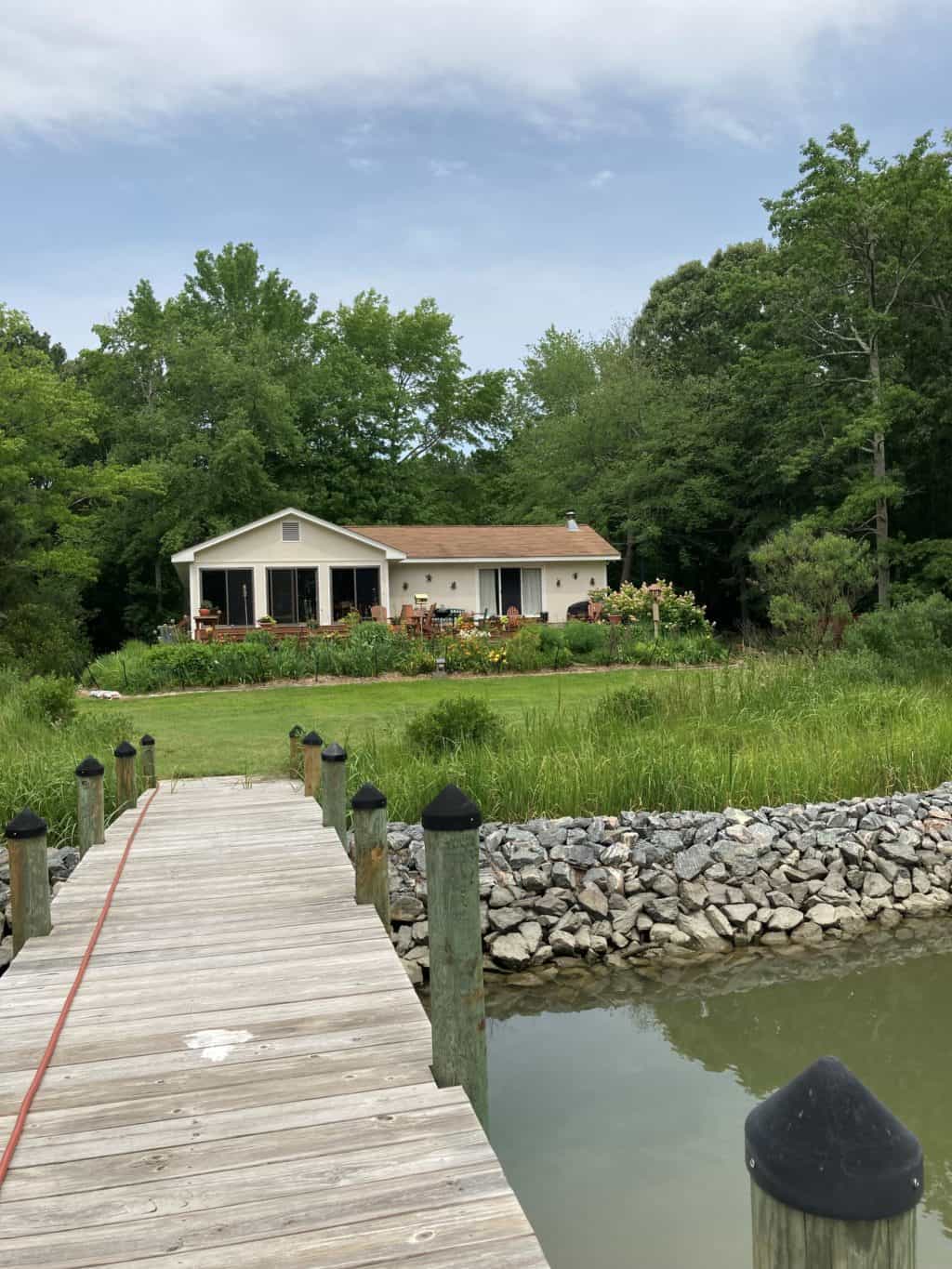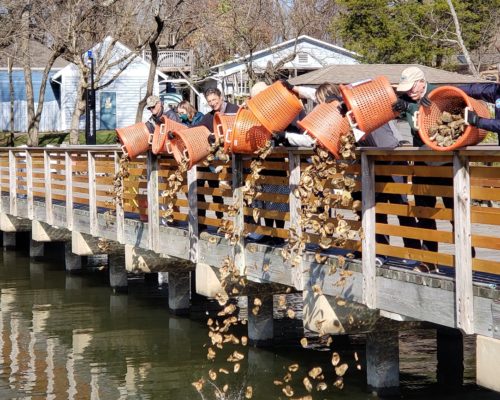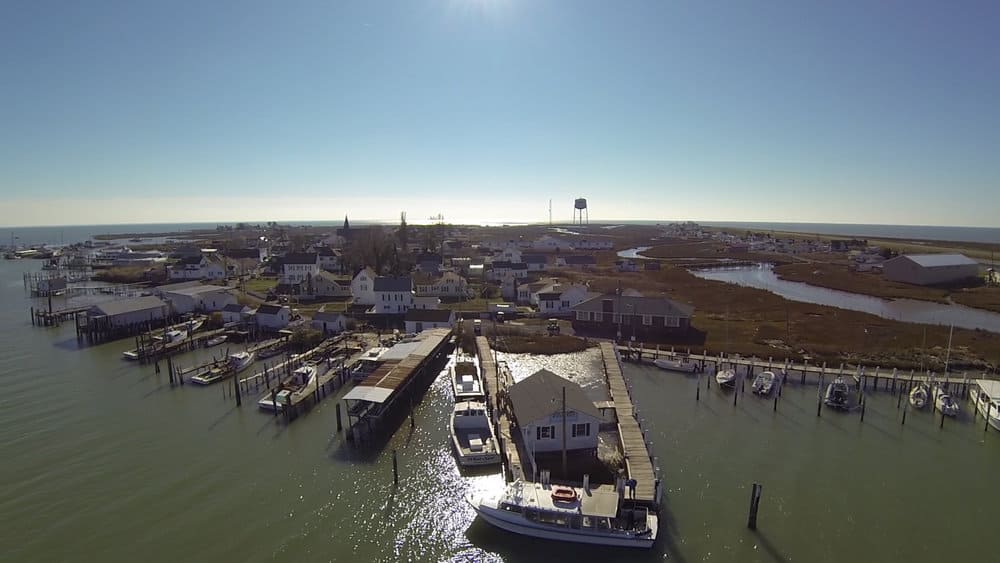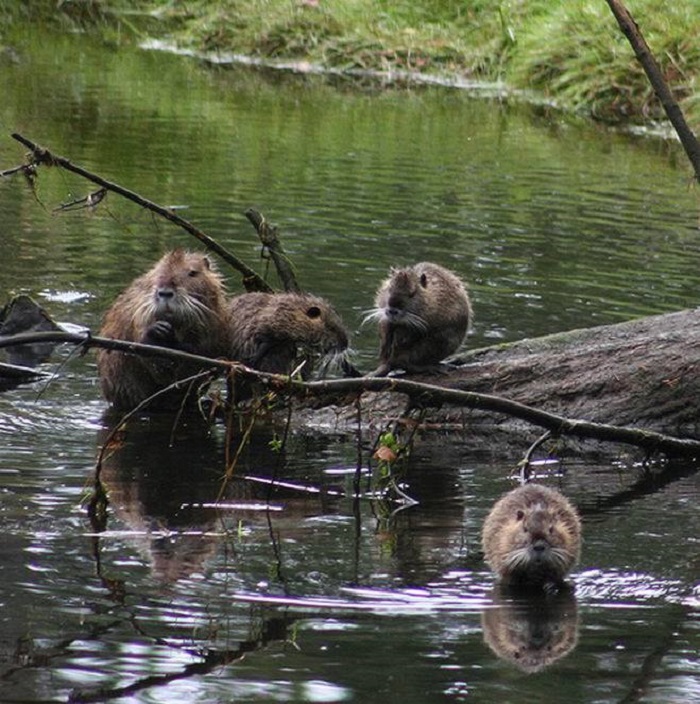On the Northern Neck of Virginia, outside of Kilmarnock, Jane Stilmar and her husband Ben were watching the slow erosion of their shoreline. When Hurricane Ernesto hit in 2006, significant flooding convinced them to raise their house. But the erosion kept eating at the coast, year after year.
Eventually, Stilmar realized that the water was getting too close. “We’ve got to do something,” she remembered thinking.
Stilmar ended up installing a living shoreline—natural water breaks like sand, marshes, and oyster reefs that stabilize shores and conserve habitats—to stop the erosion.
The Virginia Department of Conservation and Recreation (DCR) is hoping to expand similar living shoreline construction in rural coastal Virginia with a new $1 million grant from the National Fish and Wildlife Federation.
Over the three-year grant, DCR will strengthen existing partnerships with organizations that install living shorelines, create a stockpile of ready-to-build designs, and install 1,400 feet of new living shorelines in socially vulnerable areas.
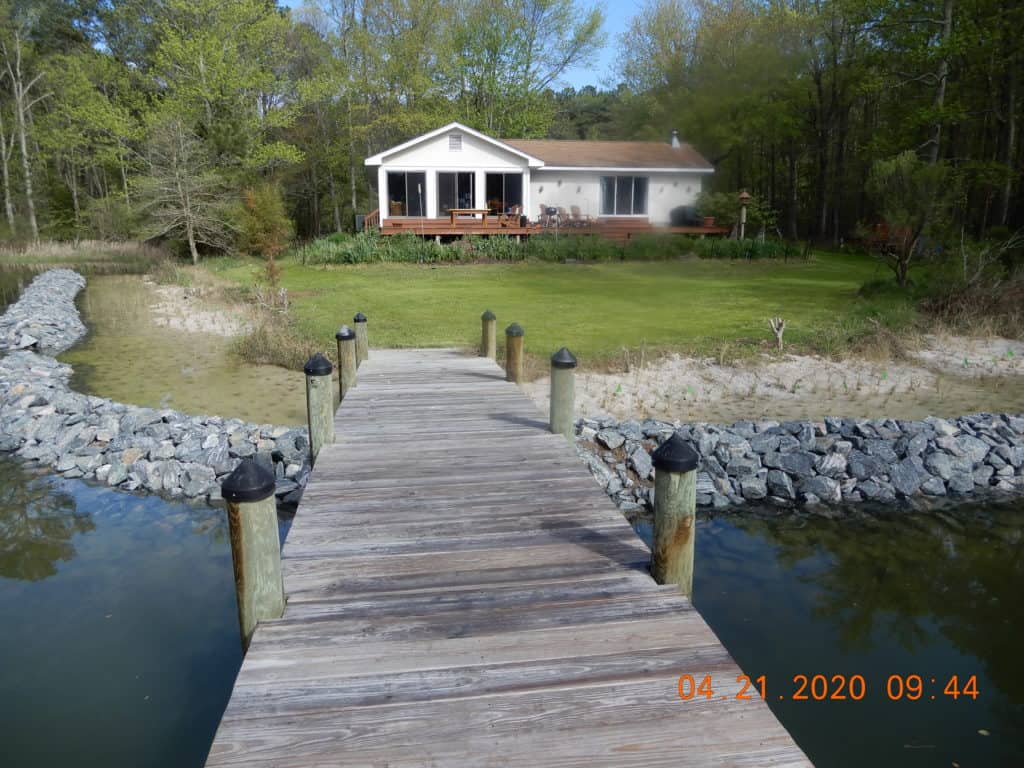
Living shorelines provide a number of important benefits. They can filter out pollutants like nitrogen, phosphorus, and sediment. Some Virginia coasts also have estimated erosion rates of 30 feet per year. While hard infrastructure like bulkheads and seawalls can help block water, over time, they can still erode or fall, requiring extensive maintenance, explains Pamela Mason, a senior research scientist at the Virginia Institute of Marine Science.
Because of the benefits, the Virginia legislature passed a bill in 2011 declaring living shorelines as the “preferred alternative for stabilizing tidal shorelines.” These solutions are also key to the Chesapeake Bay Phase III Watershed Implementation Plan, which lays out how to reduce pollution in the Bay. The plan sets the goal of having 500,000 feet of new shoreline management by 2025.
So far, the region has reported about 244,000 feet of living shorelines, according to Aaron Wendt, an environmental specialist at DCR. With four years left to meet the goal, every new program counts.
Wendt expects that DCR will build between two and four living shorelines as part of this grant. DCR will be relying on existing partnerships with Watershed Roundtables and Soil and Water Conservation Districts to help choose the sites and use tools like ADAPTVA to assess social vulnerability based on social and economic factors.
To fund her living shoreline, which is a rock sill backfilled with two types of grasses, Stilmar used another source of funding from the Virginia Conservation Assistance Program (VCAP), a cost-share service run by the Soil and Water Conservation Districts. She received $15,000 out of a total cost of $35,000.
“The grant propelled us to take action,” Stilmar said. “I don’t know if we would’ve done this otherwise.”
The benefits of cleaner water and less erosion from living shorelines should last for years after installing.
“If a living shoreline is done properly,” Mason said, “it should last pretty much forever without needing much additional attention or cost.”
“With more and more on the ground,” she continued, “it’s definitely going to make a difference in trying to achieve our water quality goals.”
-Emma Johnson

